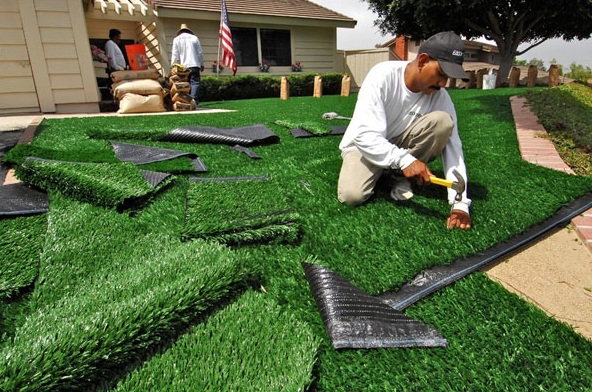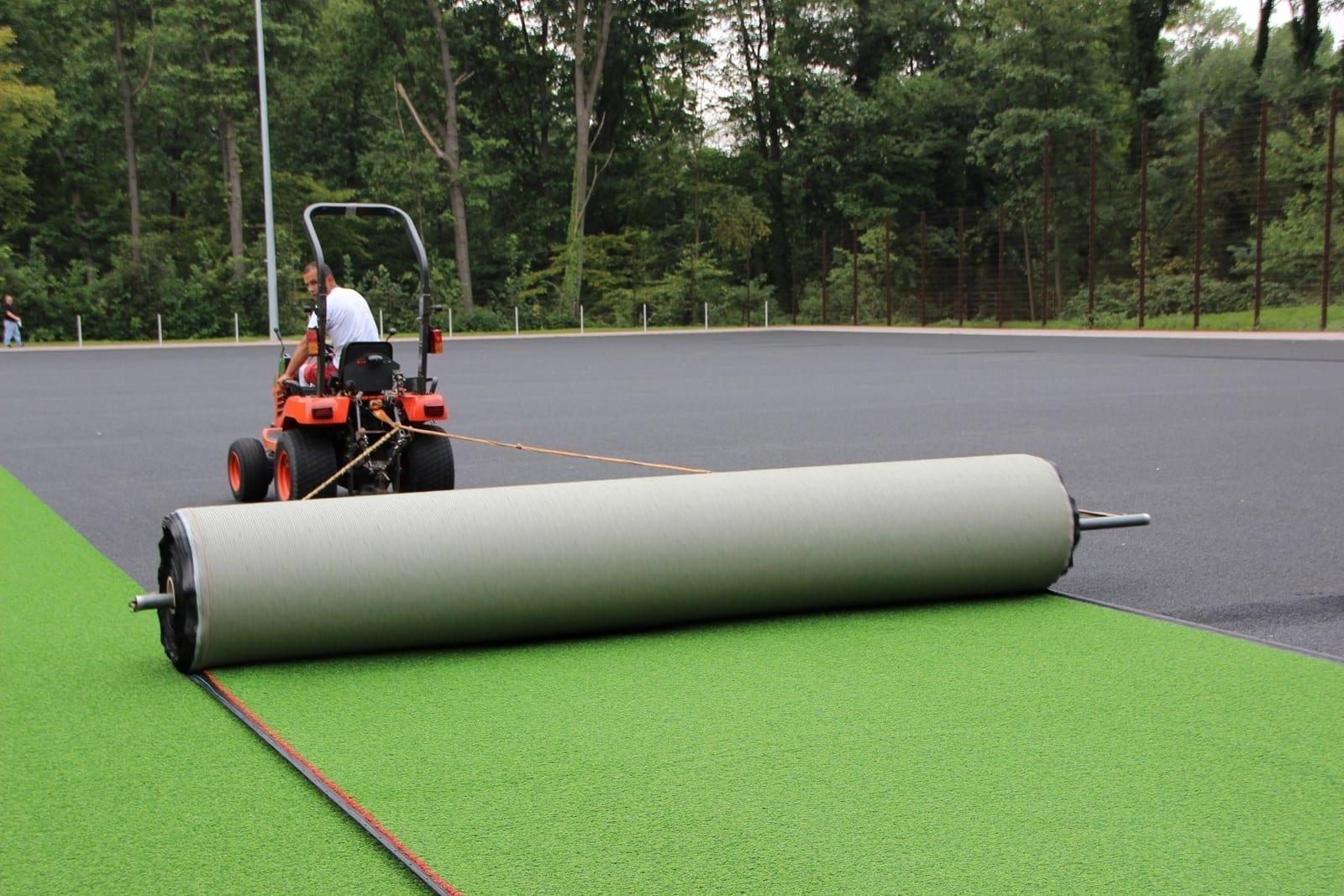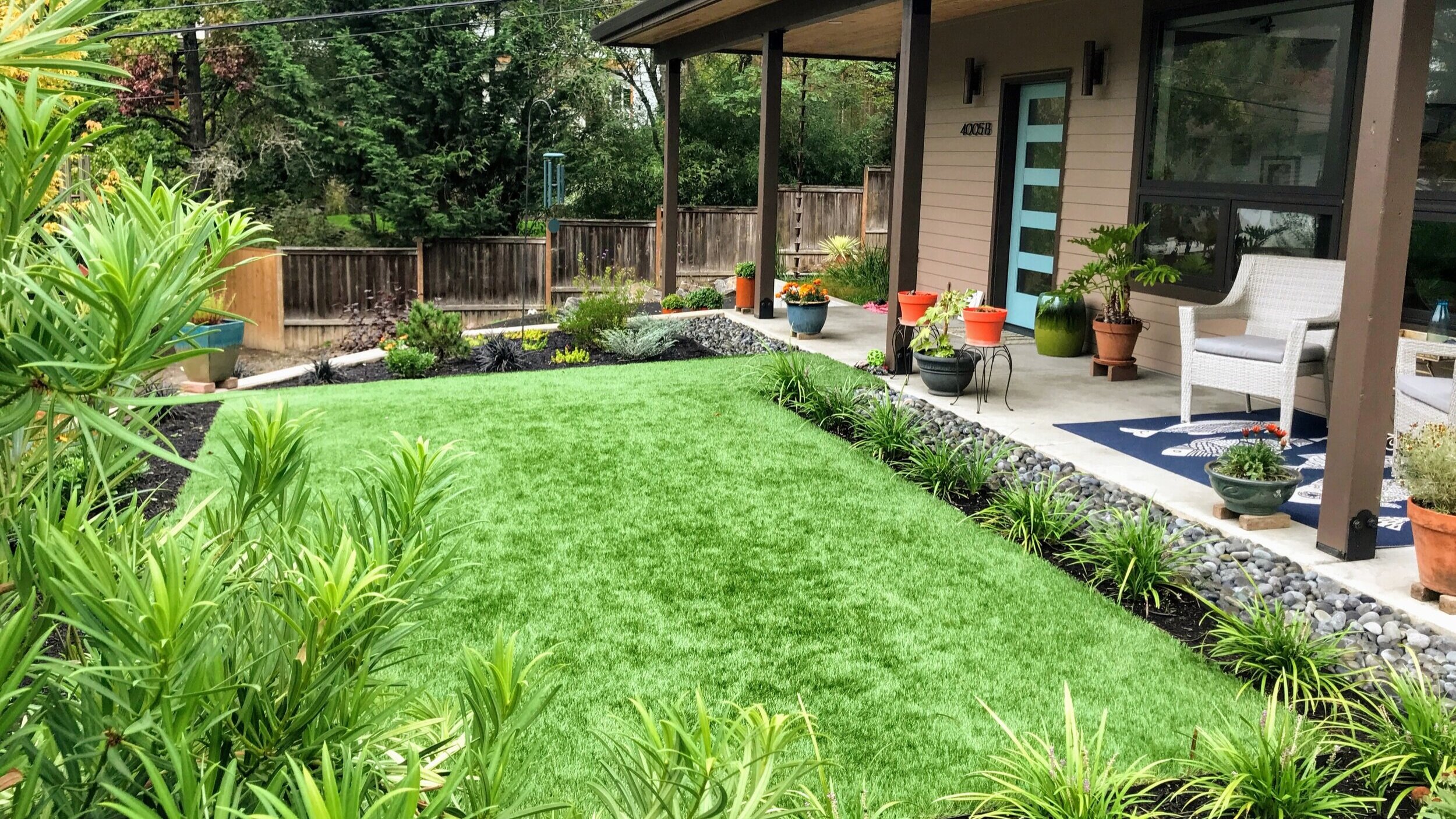Look Into the Environmental Benefits of Opting for Synthetic Grass Solutions
The adoption of synthetic grass options provides a compelling chance to resolve pushing environmental difficulties. By dramatically minimizing water use and decreasing the application of unsafe chemicals, these alternatives not only promote sustainable landscaping but likewise secure local environments.
Water Preservation Advantages
One of the most substantial advantages of synthetic turf is its capacity to save water. In contrast, fabricated grass does not need watering, considerably decreasing the general demand for water resources.
By removing the demand for normal watering, man-made turf adds to sustainable landscape methods and assists alleviate the environmental influence of excessive water intake. The preservation of water extends to the reduction of overflow, which can lead to dirt erosion and waterway contamination.
Additionally, the setup of artificial grass permits towns and home owners to allocate water sources a lot more efficiently, concentrating on important usages such as drinking water and agriculture. The change towards man-made turf not just promotes responsible water use yet likewise aligns with broader environmental goals targeted at preserving natural deposits.
As neighborhoods progressively focus on sustainability, the water preservation advantages of fabricated lawn offer an engaging instance for its fostering in residential and commercial landscaping tasks.
Lowered Chemical Usage
The change to synthetic grass substantially lowers the reliance on chemical treatments frequently made use of in natural yard upkeep. Conventional turf management typically includes the application of plant foods, chemicals, and herbicides to promote growth and control pests. These chemicals can posture threats to human wellness, regional wildlife, and the environment, adding to dirt and water contamination.
On the other hand, synthetic grass gets rid of the requirement for these unsafe substances. Once mounted, it calls for marginal maintenance, mostly being composed of routine cleansing and irregular infill replenishment. This decrease in chemical use not just profits the instant atmosphere but also adds to wider ecological security. By reducing the launch of synthetic substances into the ecological community, man-made turf advertises healthier dirt and water systems.
Moreover, the lack of chemical runoff related to artificial grass installations assists shield local rivers from pollution, supporting marine life and preserving biodiversity. Phoenix turf companies. As communities progressively prioritize lasting techniques, choosing for fabricated grass offers a feasible solution that lines up with ecological preservation objectives. Via this shift, building proprietors can delight in rich eco-friendly rooms without compromising environmental wellness, leading the means for a more lasting future
Lower Carbon Impact

Moreover, the installation of man-made grass can result in considerable water conservation. All-natural lawns require substantial quantities of water for irrigation, which not only adds to the carbon impact connected with water extraction and treatment however also pressures local water sources. In comparison, synthetic turf needs marginal upkeep, calling for no watering, thereby considerably decreasing water usage and its connected energy expenses.
Furthermore, the durability of synthetic grass adds to its decreased carbon impact. With a life expectancy of up to 15 years or more, the need for frequent replacements is reduced, leading to much less waste and reduced energy consumption in manufacturing and dealing with standard lawn options. On the whole, synthetic grass offers a lasting alternative for environmentally aware landscaping.
Environment Conservation
Environment conservation is an essential factor to consider in the dispute over landscaping choices, particularly when contrasting fabricated lawn to all-natural lawn. All-natural lawn lawns often require substantial maintenance, consisting of the use of herbicides, pesticides, and plant foods, which can detrimentally affect local communities. These chemicals can leach into the dirt and waterways, damaging indigenous vegetation and fauna and visite site disrupting neighborhood environments.
Man-made grass removes the demand for hazardous chemicals, consequently shielding neighboring wild animals and keeping the integrity of surrounding environments. The setup of man-made turf can lead to the conversion of former lawn areas into more biodiverse landscapes, such as pollinator gardens or native plant areas, which can sustain neighborhood wild animals.
Inevitably, the change to synthetic grass not only Your Domain Name conserves water and decreases maintenance efforts however also fosters a more harmonious partnership in between human tasks and the native environment, promoting habitat conservation while doing so.
Long-Term Sustainability
Lasting sustainability is an essential consider assessing the advantages of man-made grass over conventional turf lawns. One of the most significant benefits of synthetic grass is its longevity; it can last approximately 15-20 years with marginal maintenance, whereas all-natural lawn needs frequent reseeding and substitute. This durability decreases the demand for consistent resources, such as water, plant foods, and chemicals, which are necessary for preserving a healthy turf lawn.
In addition, man-made grass contributes to a decrease in carbon emissions related to grass treatment equipment. Typical yards frequently require gas-powered mowers, leaners, and blowers, all of which add to air pollution. Artificial turf companies phoenix. In contrast, fabricated turf gets rid of the requirement for such equipment, promoting a cleaner environment
Additionally, the production of synthetic grass increasingly utilizes recycled products, improving its sustainability profile. As makers adopt eco-friendly methods, the environmental footprint of artificial grass remains to lessen.

Final Thought
The adoption of synthetic grass options offers considerable environmental benefits, including significant water conservation, reduced dependence on unsafe chemicals, and a reduced carbon footprint. In addition, man-made turf help in protecting natural habitats by decreasing land disruption and promoting long-term sustainability with using long lasting products. Collectively, these factors underscore the possibility of synthetic grass to add positively to ecological wellness and supply a practical choice to conventional landscape design techniques in an increasingly resource-conscious globe.
In contrast, fabricated grass does not need watering, significantly lowering the general need for water resources. By minimizing the launch of synthetic substances into the ecosystem, synthetic lawn promotes much healthier dirt and water systems.
Moreover, the setup of artificial grass can result in substantial water conservation. In best site comparison, artificial lawn requires very little maintenance, needing no watering, thus significantly lowering water usage and its linked energy expenses.

Comments on “Budget-Friendly Turf Installation Phoenix AZ for a Low-Maintenance Lawn Solution”